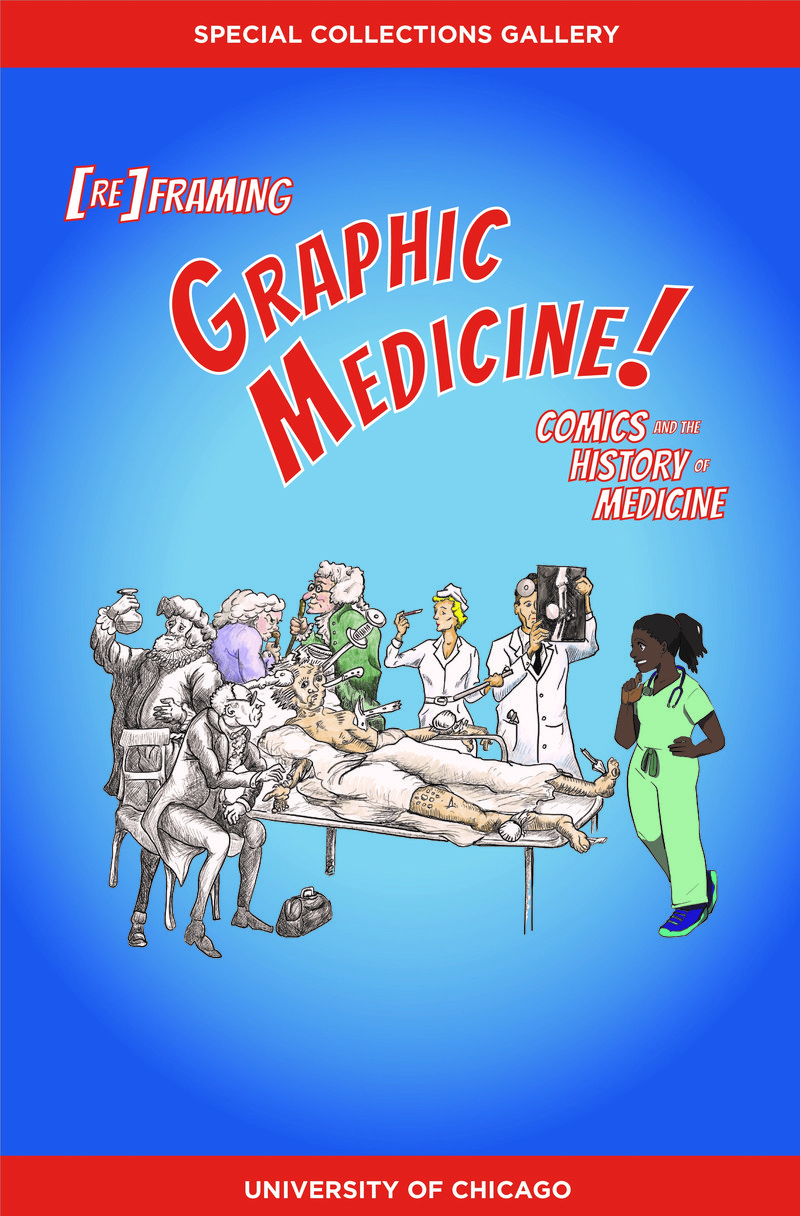
The traditional history of medicine has been that of heroic doctors and their scientific and clinical breakthroughs, often accompanied by iconic images that glorify their actions and achievements. This history is incomplete.
Centered around doctors and scientific progress, this history neglects what historian Roy Porter calls the “sufferers’ history—medical history from below.” Furthermore, as historian Sander Gilman notes, the writing of medical history has often ignored images. To account for these distortions and achieve a history that considers the sufferers and the social and cultural contexts in which medicine was practiced and evolved, scholars are increasingly drawing from a wider range of historical sources, including comics and cartoons. Spanning from the origins of comics through their mid-20th century “golden” era to contemporary works of graphic medicine, this exhibit traces a unique visual history of the experience of illness and the evolution of Western healthcare practices and, in doing so, broadens our understanding of how the history of medicine is constructed. Drawn from serialized prints, illustrated newspapers and magazines, comic books, zines, digital comics, and graphic memoirs, the images of those who suffer illness, practitioners, and clinical interactions provide commentary, both critical and complementary, on medical progress and professionalization from a variety of perspectives and eras.
The exhibition reframes the history of medical images from the epic story of progress and “great men” toward a broader socio-cultural history, one that draws “from below” and incorporates the overlooked medium of comics. However, it is important to note that the early historical narrative also reaffirms the traditional history of medicine by centering on the clinician and is a testimony to the systems and hierarchies that contribute to health inequities and limit broad social and cultural representation in medicine and healthcare. Over the last sixty years, beginning with the rise in underground comics and zines, the content, perspective, and uses of health-related comics expanded, contributing to the emergence of graphic medicine as a unifying field of inquiry and creation. Addressing topics such as environmental health, gender and sexuality, disability, health inequities, justice, and ethics created from the sufferers’ point of view, these contemporary comics expand and diversify the narrative and iconographic scope of the history of medicine and enrich our understanding of the illness experience and present-day healthcare.
Displaying these images as an exhibition is meant to engage the viewer with the concept of these works coming together as a metacomic—an unfolding accumulation of images that tells the story of the interrelated histories of medicine and comics. Situated within the context of the COVID-19 pandemic, this exhibit further connects the historical tension between skepticism of and confidence in science and medicine with contemporary concerns. Collectively, the images in this exhibit offer a complementary history of medicine, one that, in keeping with the medium of comics, is at times subversive, often entertaining, and always thought-provoking.
